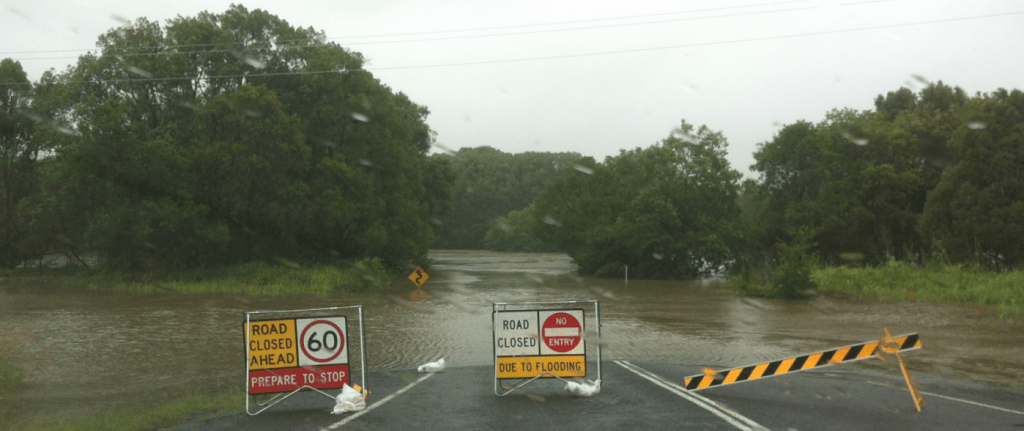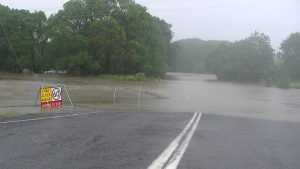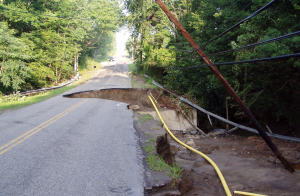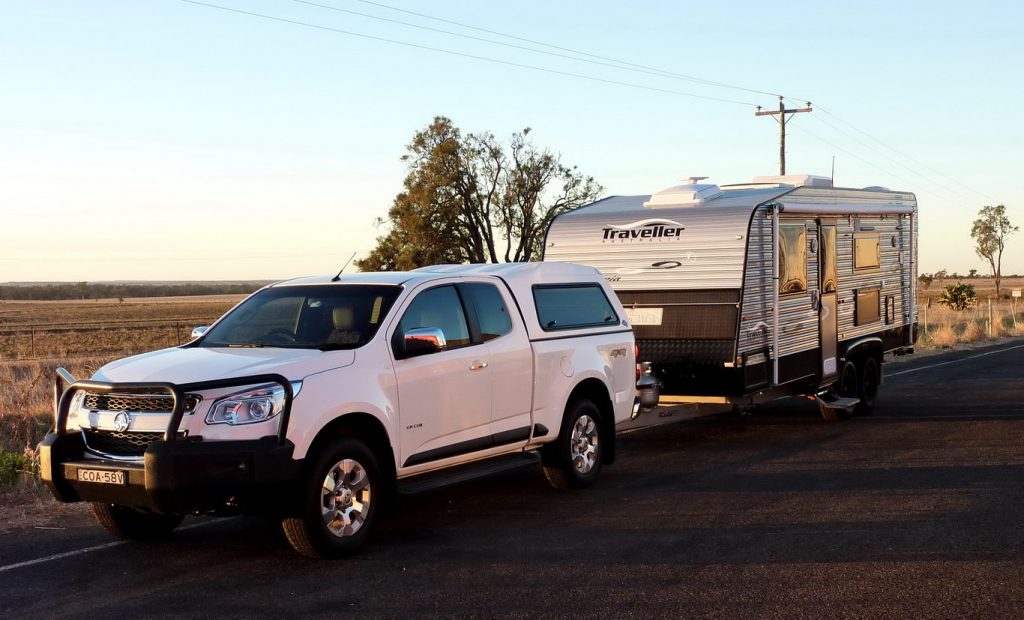

Following on from our 5 steps for driving in bad weather, this blog will give you 3 vital tips on how to get around safely in extreme weather conditions i.e. cyclones and flooding. Flooding can occur in a matter of hours or over a few days. Road conditions can change very quickly in these circumstances causing your daily drive to become treacherous and unpredictable. Always slow down and drive to suit conditions as traction is reduced. If you don’t need to be on the road postpone your trip to a later time when the flooding has subsided. But if you are on the road, remember IF IT’S FLOODED FORGET IT.
-
Pre-planning and alternate routes
Travelling in these conditions its best to plan ahead before venturing out on the roads. This prevents coming across flooded roads and having to back track or worse becoming stranded. The Queensland government has developed a flooded road map where users can provide information on roads prone to flooding and roads currently flooded. A similar map can be found on The department of transport and main roads page, providing information on flooding and other traffic hazards. Simply enter your postcode or suburb to find affected roads in your area. Consider an alternate route or plan B as your main route may become cut off due to rising waters.
-
Look out for flood warning signs
The next step once out on the road is to keep a close eye out for flood warning signs. Even though you have pre planned your route, flood waters can still be rising. Causing further roads to become inundated with flood water. If you see a sign as indicated below (Example 1), its best to slow down and proceed with caution if the road hasn’t already been closed. This will allow you more time to check the road ahead and come to a stop safely if flood waters have risen. If you do come across a closed road (Example 2), turn around and find an alternate route. Never drive around signs, doing so you face up to a $600 fine and put yourself at danger.
1. 2.
2. 
3. Never enter flood water
Never drive through flooded roads as you cannot see what is underneath the water. There is a high chance of debris such as mud, sand, tree branches, rocks or power lines. In some circumstances, the road could have even been washed away leaving uneven surfaces and large holes. If this is the case and you proceed, your vehicle could become stuck and put you and your family in a life-threatening position where you require rescuing. If the water is flowing, you are at even further risk of being swept down a creek or river. Larger vehicles, such as an SUV or 4WD, can become buoyant in these circumstances.



Always put the safety of you and your family first. It’s not worth the risk and remember, IF IT’S FLOODED FORGET IT. If you do unfortunately find yourself in one of these situations don’t hesitate to give us a call at Quicktow Tilt Tray Transport on 0421 767 515.



